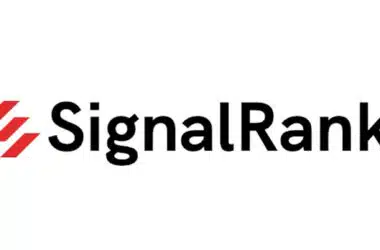Table of Contents
Fraud Detection Through Artificial Intelligence
Banks lose billions of dollars to fraud every year. In fact, according to the Association of Certified Fraud Examiners (ACFE), banks and other organizations lose at least 5% of their revenue to fraud annually.
The United States loses at least $200 billion to fraud each year. Fraud has become easier with the advancement of technology, and it costs consumers more than ever before. That’s why traditional banks spend millions on anti-fraud technologies, analysts who study the industry warn that banks are losing this arms race.
According to a KPMG, fraud costs are increasing at a faster rate than banks are spending on fraud management. This calls for a radical shift in fraud prevention and detection, otherwise, the banking business model will become unsustainable.
Fortunately for the banking industry, fintech which was for a time seen as a direct threat and competitor is emerging as the most likely saviour. Fintech companies and startups like Zafin, Backbase, Shield and others are using machine learning and artificial intelligence to address the fraud problem.
What is Fraud Detection?
Fraud detection is the process of identifying fraudulent activity, whether it is an attempt to commit fraud or actual fraud that has taken place. Fraud can take many forms, such as credit card fraud, insurance fraud or transaction fraud. Financial institutions, retailers, and other businesses lose billions of dollars every year directly and indirectly to fraud.
Directly losing money makes sense. Any instance of fraud such as hacking or a.t.m skimming is direct fraud with the bank. Indirectly losing money to fraud refers to the false identification of legitimate transactions as fraudulent ones. This mostly happens when fraud detection measures are set so high that even legitimate transactions are flagged as fraudulent by the system. Banks lose approximately $118 million per year due to such false alerts.
Additionally, the cost of preventing fraud is not static. The cost of preventing online credit card fraud increases over time as hackers become better at their jobs. According to the 2017 Cost of Fraud Report issued by LexisNexis, 81% of financial institutions reported that it would now be more expensive to prevent fraudulent transactions than in 2015.
Technologies used in Fraud Detection
Machine learning and AI are already being utilized by banks for fraud detection. Machine learning is an application of artificial intelligence (AI) where programs can learn on their own, automatically becoming more accurate in predicting outcomes without explicit programming. For example, the program would be able to identify fraudulent transactions faster than a human, and could even learn how to prevent fraud better than humans.
AI is the simulation of human intelligence processes by machines, especially computer systems. These processes include learning (the acquisition of information and rules for using the information), reasoning (using rules to reach approximate or definite conclusions) and self-correction. Artificial Intelligence has become more popular because recent technological advances have made it possible to incorporate AI into computer systems.
Trends in Fraud Detection
As machine learning and artificial intelligence continue to improve, more advancements are being seen in the field of fraud detection. The extent of these changes cannot be predicted exactly, but some researchers have given suggestions for potential new uses of technology.
Anomaly Detection
According to many researchers, AI could be used to detect anomalies in customer behaviour. If a certain pattern was identified as being unusual, it would be flagged for manual inspection.
“Anomaly detection” can also play a role in improving fraud detection software. An anomaly is something that does not match up to an expected norm or pattern. If there are abnormalities in customer behaviour that are flagged as potentially fraudulent, then it can be determined that fraud has probably taken place.
Zafin has partnered with top banking institutions around the world including Barclays, HSBC, and Deutsche Bank. Many of these banks have suffered significant losses due to fraud over the past several years. The company’s patented algorithms detect a wide range of fraudulent activities, including transaction laundering and account takeovers.
Backbase has been operating from stealth for years now to create its “Invisible Fraud Prevention” solution. According to sources, this tool uses machine learning and AI to identify anomalies in customer behaviour as well as rule-based logic to determine whether
Social dynamics
Researchers also suggest that “online social dynamics” can offer unique insight into fraud detection. This is based on the idea that “agents in social networks tend to form communities with preferences, norms, and trust relationships. These connections could be used for identifying fraud.”
The line between online social dynamic analysis and social credit policing is very thin. China has successfully implemented a social credit-based policing system in Shenzhen which has emerged as the tech capital of China. Whether this is good or bad, is a different debate.
Biometric analysis
Biometrics isn’t a new concept, but the implementation of this technology is evolving using data science and machine learning to make it even more secure. For example, face recognition programs are able to identify individual users through specific facial features – meaning passwords are no longer needed.
Voice biometric analysis is another idea that researchers suggest. This works by using software to analyze the voice of a customer and can detect fraud based on whether or not it matches up with previous information stored on file. One example of this kind of technology in use is AIT Group, which provides services for some Malaysian banks. By scanning for 200 data points, such as the voice pitch and tone, AIT’s software can conduct a “live phishing test” while customers call in to make inquiries.
Using these technologies, banks will be better able to identify potential fraud before it happens, leading to reduced losses.
Fraud detection is an important consideration for financial institutions, but the old techniques are no longer enough to keep up with the latest scams. The era of “brute force” fraud prevention has given way to a more nuanced approach that uses machine learning and artificial intelligence technology in creative new ways.
In this article, we’ve discussed how these technologies can help banks identify anomalies or changes in customer behaviour that may indicate fraudulent activity – before it ever happens!
















Recent Comments